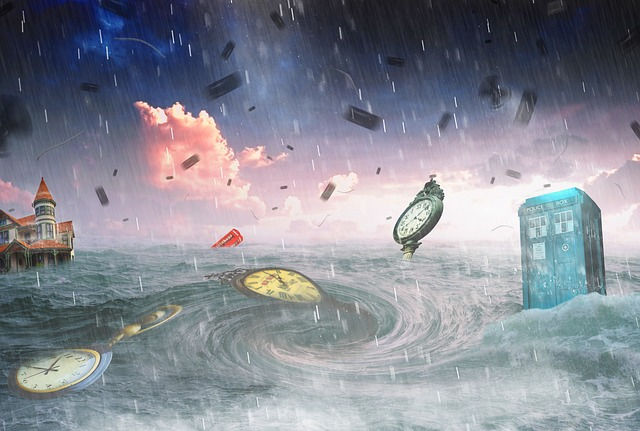Russian Earthquake: Its Big Impacts and Risk Mitigation
- SMS Broadcaster Admin

- Aug 20
- 3 min read
Every natural disaster carries risk. A mitigation program is needed to minimize it. In the case of the Russian earthquake, centered in the Kamchatka Peninsula, there was a complex impact. Fortunately, the Russian government has implemented a mitigation program that is very appropriate to handle risks, resulting in no casualties in this disaster.
The Big Impacts of the Russian Earthquake
The earthquake in Russia contained enormous energy. The strong earthquake was centered in the Pacific Ring of Fire, resulting in complicated impacts. This disaster also pushed other natural disasters across continents along active tectonic plates in the Pacific area.

Tsunami in Russia
The first impact was a tsunami. It is a huge wave that could strike land areas stretching tens of kilometers. The extreme movement of plates was the cause of a massive earthquake and a tsunami. The two plates collided, with one plate subducting while the other moved over it. After that, seawater was spilled out, and the magnitude of the tsunami waves was determined by the force of the collision.
The potential for a tsunami was predicted through observations using specific technology. The Russian government had been given an emergency warning. This warning aims to urge people to stay away from coastal areas and move to safe areas and higher ground.
A Transcontinental Tsunami
Second, the impact was a transcontinental tsunami. This tsunami occurred not only in one state or several states within one continent, but also in several states within several continents. The strong earthquake that was located on the Pacific Ring of Fire was the cause. This triggered the movement of other sensitive plates along the same path.
After the earthquake occurred, several regions were hit by a tsunami. The characteristics of the waves also varied. The closest affected regions of Russia were Japan and Taiwan. In Southeast Asia, there were affected Indonesia and the Philippines.
Australia and New Zealand in the South Pacific were also affected. The next area is Oceania, which consists of islands in the South Pacific. Tonga and the Solomon Islands were affected among these islands. Tonga Island is in Polynesia, a subregion of Oceania, while the Solomon in the northeast of Australia.
The tsunami spread to the American Continent. Among the US states, California, Hawaii, Oregon, Washington, and Alaska were affected. Guam, a US territory, was also affected. In North America, there was Mexico. Last, Chile and Ecuador at the southern area.
Volcanic Eruption
Did you know Mount Klyuchevskaya? This volcano is considered the highest volcano (4,754 m) in Eurasia. Eurasia is the union of Asia and Europe or called a supercontinent. The highest volcano erupted due to the 8.8 magnitude earthquake that struck Russia. It caused the powerful eruption and delayed for both local and international flights.
Risk Mitigation
The risk mitigation in case of a Russian earthquake has been highly appropriate and comprehensive by the government of Russia. Each risk mitigation step has been implemented according to established procedures, effectively reducing risks and improving public safety. Risk mitigation encompasses before, during, and post-disaster management efforts, in the following order.
Monitoring and Analyzing
The first step in risk mitigation is monitoring and analyzing signs of natural disasters. Both of them are correlated. The results of monitoring are analyzed. This is important to identify potential disasters and present accurate information. Using seismographs, the disaster management teams and scientists monitor the frequency of the earthquake periodically.
Socialization and Simulation
Along with these observations, socialization and simulation are important to educate the public. The goal is to optimize the knowledge about disasters and how to overcome. This method can reduce the risks, including the risk of an earthquake.
Earthquake Warning Alert System
The Russian government has implemented an earthquake warning alert system. The system consists of two components such as an early warning system and an evacuation warning system.
The early warning system is completed with detectors, so when an earthquake is detected, an alarm or siren is sounded. A few moments later, an evacuation warning is given, urging the public to evacuate in the safe area.
Recovery
The next step after evacuating the affected population is to carry out a comprehensive recovery. It includes all aspects, such as health, economic, social, and psychological.
Evaluation
The final step in risk mitigation is evaluation. This stage is crucial for determining the success of disaster management, whether it meets standards or not. Suboptimal areas can also be identified for further improvement.
The Russian earthquake and all the risks can be managed very effectively by the Russian government. Among the measures implemented, the disaster warning system is crucial, providing information before a disaster strikes and evacuation calls. In this regard, Russia sends emergency messages via SMS and mobile apps.
Now, emergency messaging machines via SMS are available, considered more effective. Messages are sent in real time and evenly to mobile phones. The government can procure machines with this specific technology at smsbroadcaster.com.



I’ve caught my husband cheating on me so many times, and when I told him that he always claims to have changed and all that… Now he’s hiding his phone from me, and I still think he’s cheating because I couldn’t hack into his phone anymore. So I contacted Henry via, Henryclarkethicalhacker@gmail. com, SIgnal or whatsapp +1219-796-0574, This HACKER was able to hack his phone and prove to me that I have access to my husband’s phone and my husband doesn’t know about the hack…Right in my phone I have all of my husband’s daily activity phones in my phone I got to read all his chats, texts, calls, what-what-app, Facebook, and many other things this keylogger program really helped me.